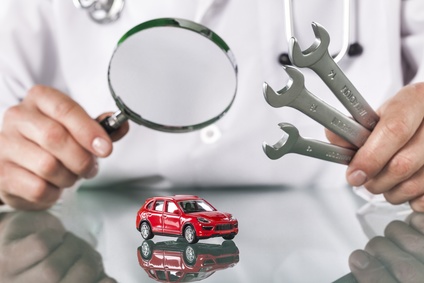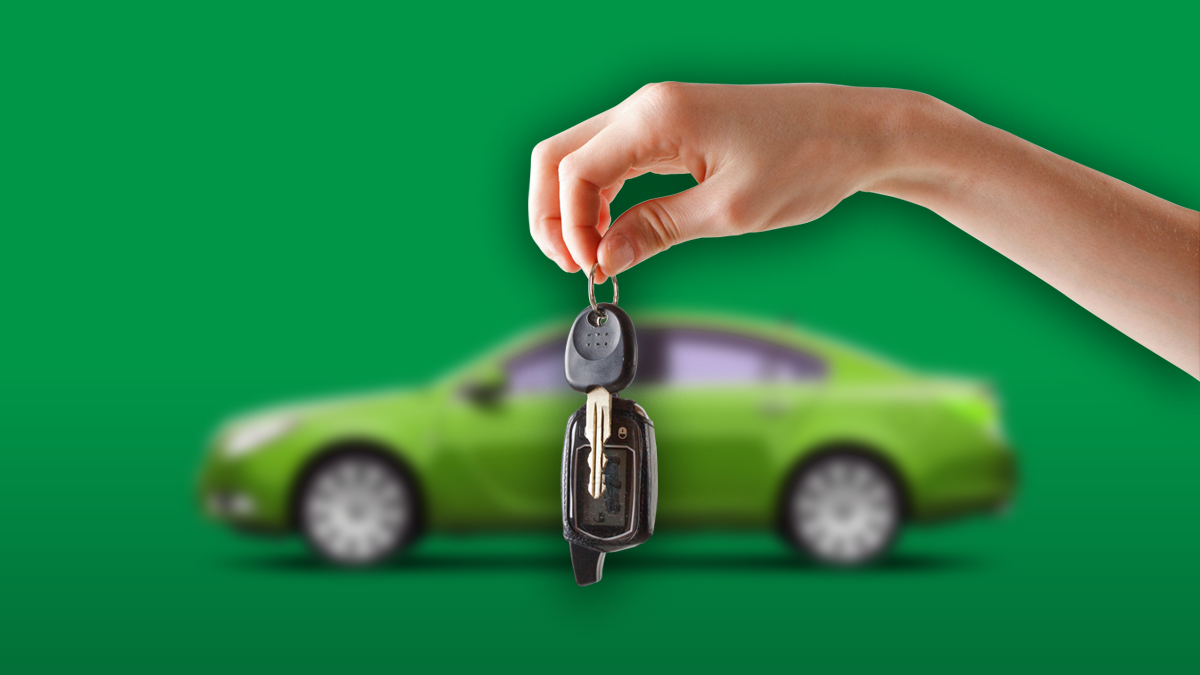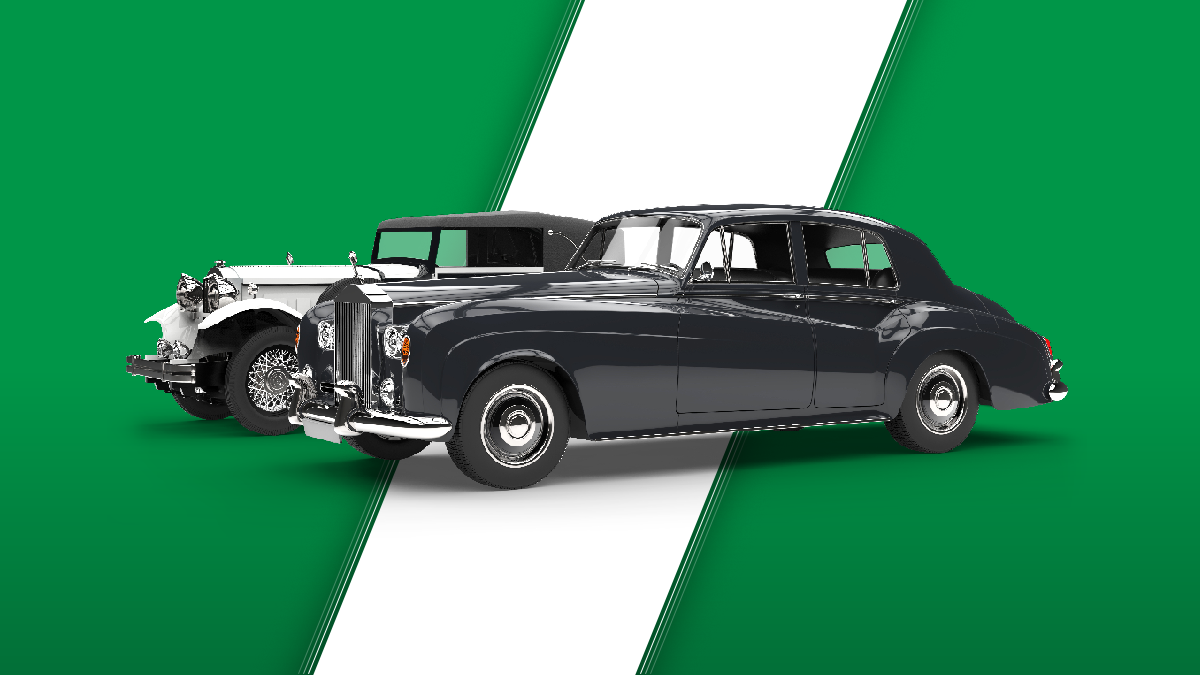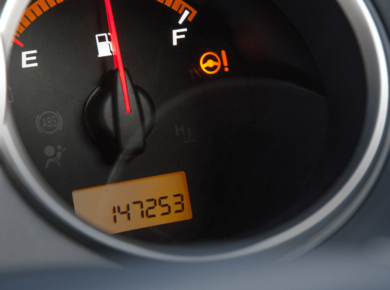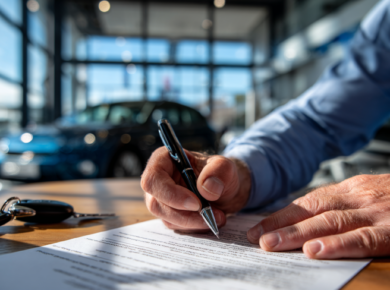Whether you’re a dealer or a private seller, knowing how to sell a used car effectively can make all the difference in how fast you close the deal and how much money you make. With the rise of online platforms, buyers now expect more transparency, quicker communication, and easier ways to verify a vehicle’s condition.
This guide walks through each step of the used car sales process, from preparation and pricing to closing the deal, with a focus on best practices for dealerships and individual sellers alike.
Step 1: Organize Your Documents
Before listing the car, make sure all paperwork is complete and accurate. This helps build trust and avoids legal delays.
- Title: This proves you own the vehicle. If you still owe money on the loan, contact your lender to settle the balance and release the lien.
- Registration: Make sure it’s valid. Some states require you to surrender or transfer your license plates.
- Bill of Sale: This document finalizes the agreement between the buyer and the seller.
- Service and Inspection Records: Share maintenance logs or any third-party inspection reports.
- Vehicle Information: VIN, odometer reading, model, and any previous damage disclosures.
Being organized from the start shows buyers you’re serious and helps you move through the sales process smoothly.
Step 2: Assess the Car’s Condition
Your vehicle’s condition is one of the biggest factors in how much it will sell for. A thorough check—both cosmetic and mechanical—is key.
Dealers and sellers can use tools like ClearVin to conduct a VIN-number lookup for accurate ownership history, accident reports, and title status. You can also evaluate its quality using the car condition rating tool to better support pricing decisions and help reassure buyers.
Be transparent about your car’s flaws as well as its strengths. If the tires are nearing the end of their lifespan or the paint has some scratches, disclosing this builds trust. For dealerships, having a standard inspection checklist can also help maintain consistency across listings.
Step 3: Choose Where to List the Vehicle
If you’re asking where can I sell my car, you have a few strong options:
- Dealerships: Some sellers prefer trading in or selling directly to local dealers for convenience.
- Private sale: If you’re looking to sell used cars by owner, private listings may yield a higher return, though they take more time.
- Online platforms: Sites allow you to sell cars online quickly while reaching a larger audience.
If you’re looking for the best place to sell a used car online, choose a platform with strong traffic, verified buyers, and secure transaction support. A great example is ABM, a trusted source for used car listings and vehicle auctions.
Online listings also allow for more detailed presentations of your vehicle, including multimedia like video walkarounds and scanned inspection reports. This appeals to tech-savvy buyers who want all the information upfront before they even reach out.
Step 4: Prepare the Vehicle for Sale
Presentation matters when selling a used car. Even small improvements can increase your sales price and reduce buyer objections.
- Clean the car inside and out
- Address minor cosmetic flaws like scratches or cloudy headlights
- Change fluids and check tires
- Remove all personal items from the glove box, trunk, and cabin
Buyers want a vehicle that looks well-maintained and ready to drive. For private sellers, this is an easy way to stand out.
For dealers, a quick detailing service before photos are taken can significantly increase the perceived value of the car. You might also consider investing in paint correction or headlight restoration for older vehicles.
Step 5: Set a Competitive Price
To attract serious interest, your asking price needs to match market conditions. You can:
- Compare listings for similar used cars for sale in your area
- Use online appraisal tools
- Consider the car’s age, mileage, features, and service history
Make sure the price reflects the condition honestly. Overpricing can drive away buyers, while underpricing may raise red flags. If you’re not sure what the car is worth, checking its car condition rating and browsing similar listings can help you land in the right range.
Also, think about whether you’re willing to negotiate. Many buyers expect some room for bargaining, especially in person. You can list a slightly higher price if you know you’ll need to come down a bit during discussions.
Step 6: Create a High-Quality Listing
When selling used cars online, your listing needs to build trust instantly. Include:
- Clear, high-resolution photos of the exterior, interior, dashboard, tires, and engine
- Accurate details about make, model, year, mileage, and condition
- Notable features, repairs, and any issues
Also, mention whether the vehicle comes with extras like two sets of keys or original manuals. Link to your ClearVin report so buyers can verify the vehicle information themselves.
Many platforms let you enhance listings with premium options, like homepage features or priority search placement. These can be worthwhile, especially if you’re selling car online and need to compete with dozens of similar listings.
Step 7: Communicate with Buyers Effectively
Once your listing is live, you’ll start receiving inquiries. Respond quickly, professionally, and honestly.
Be prepared to:
- Answer detailed questions
- Share digital documents (like inspection results or the Bill of Sale)
- Schedule test drives for serious buyers
- Offer the buyer flexibility while maintaining boundaries
Use email and phone responsibly, and be cautious of spam or scammers. Reputable platforms often include messaging systems that allow you to interact without exposing personal contact details.
Step 8: Handle Test Drives Safely
Test drives are often a must for buyers deciding whether a car is right for them.
- Ask for a valid driver’s license and insurance
- Ride along if possible or have a colleague accompany the buyer
- Choose a safe, well-lit location for the meeting
This is also your chance to show off features, answer questions, and point out any quirks or a recent service.
If you’re a dealer, test drives should follow a consistent protocol that includes ID checks, waivers, and GPS tracking where applicable.
Step 9: Secure Payment
Once the buyer is ready to move forward, agree on a final sales price and decide on a secure payment method.
Common options include:
- Cashier’s check
- Bank transfer
- Escrow services (for remote transactions)
- In-person cash deals (only in safe settings)
Avoid personal checks. If you still owe money on the car, contact your lender before the transaction to confirm the payoff process.
Be wary of overpayment scams or buyers who avoid face-to-face meetings. Trust your instincts and stick with secure methods.
Step 10: Transfer Ownership
Finalizing the sale involves:
- Completing the Bill of Sale
- Signing over the title
- Removing license plates (in some states)
- Reporting the sale to your Department of Motor Vehicles
- Canceling your insurance coverage
Many states allow you to file this information online. Keep a copy of every document for your records, especially when selling your car privately.
Step 11: Promote Transparently with Digital Tools
Online platforms help streamline the sales process. When you sell vehicles online, leverage:
- Vehicle history services like ClearVin
- Photo galleries and video walkarounds
- Digital signature tools for contracts
- Pre-filled listing templates on trusted sites like ABM
By combining traditional best practices with online tools, you’ll close sales faster and with less hassle.
FAQs: Selling a Used Car
Q: What’s the best way to sell used car online?
Use trusted platforms with VIN history integration, verified buyer access, and transaction support. ClearVin and ABM are both excellent starting points.
Q: Where to sell your car if it’s older or has high mileage?
List on platforms that attract budget-conscious buyers. Make sure to include a ClearVin vehicle report to support transparency and build trust.
Q: Can I sell a used car with a loan?
Yes. You’ll need to contact your lender to get a payoff amount. Some buyers may prefer to work directly with the lender to ensure the title is properly released.
Q: Where to sell your vehicle quickly?
Consider listing on both local and national platforms. If you’re a dealer, boosting visibility through ABM can help you reach more ready-to-buy users.
Q: Is selling my used car privately safe?
Yes, as long as you use smart practices. Meet buyers in public, ask for ID, and stick to secure payment methods like a cashier’s check.
Q: What’s required when selling a used car by the owner?
You’ll typically need the title, a Bill of Sale, registration info, and a VIN history report. Check local DMV rules for any specific paperwork.
Q: I want to sell my car but don’t know where to start.
Start by preparing the car, verifying the VIN with ClearVin, and deciding where you want to list it. The right preparation makes the process much easier.
Final Thoughts
Whether you’re a private seller or dealership looking to sell used car online, the process becomes easier with the right preparation, pricing, and digital support.
If you’re asking where to sell your used car, start with trusted tools. Use ClearVin to verify vehicle information, assess condition, and share credible history. Then, list on platforms like ABM to connect with serious buyers.
From organizing documents to finalizing payment, these steps will help you navigate the entire process of selling a used car confidently and successfully.


